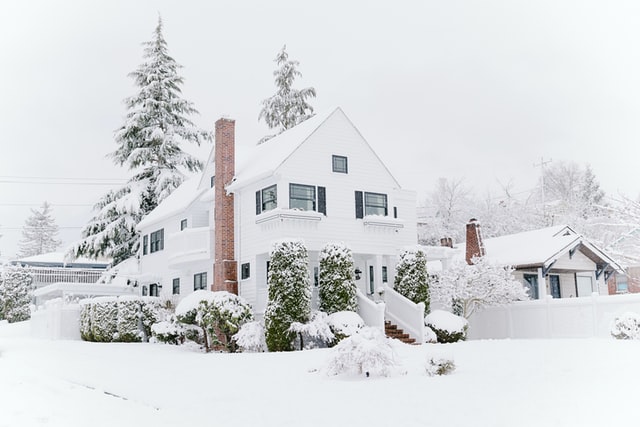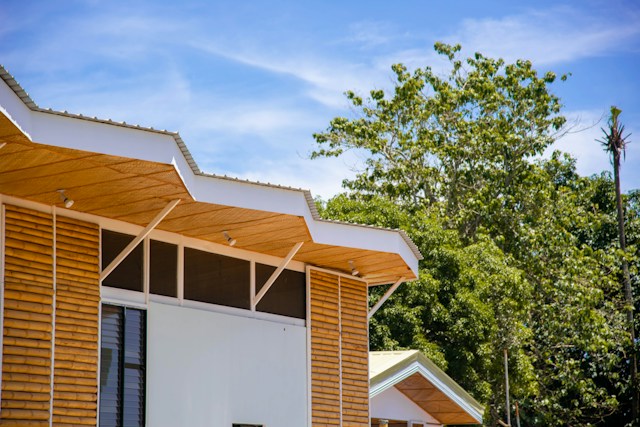Winter is a beautiful time of year that gives families a chance to spend some time inside, cuddle and keep warm, and enjoy the beautiful view of a snowy winter wonderland outside. However, snow and ice can cause the winter blues when they damage your home during the season. The elements can wreak havoc on both the inside and outside of your home, thanks to heavy snowfall, ice buildup, harsh winter conditions, and freezing temperatures. There are a few things every homeowner should know to protect your home. If you’re dealing with ice or snow damage, you can either hire a pro or try to fix the problem DIY, but it’s always best to do some prevention to keep the problem from happening again (or at all).
Types of damages
Some damage caused by snow or ice can be highly urgent to repair, while other issues might be able to wait until springtime. Here are some of the different types of damage you may experience on the inside or outside of your home due to winter weather.
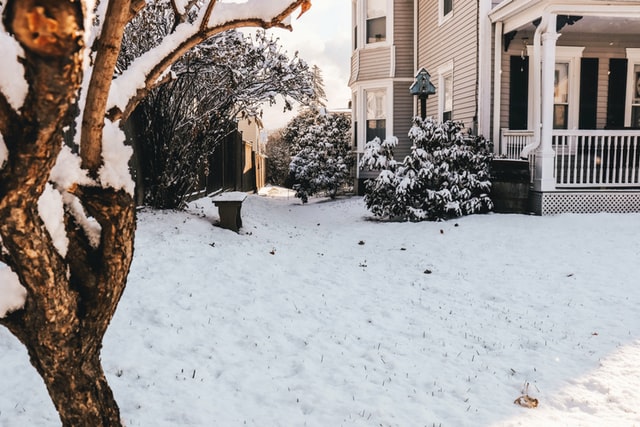
Urgent damage
You should repair certain types of damage to your home as soon as possible. Here are some examples of things you can’t afford to wait on when making repairs.
- Roof and gutters: Heavy snow loads or ice damming can cause your roof to leak or even collapse. The same goes for your gutters since they can become detached from your home if they have too much weight inside them due to heavy snow and ice.
- Why it happens: Snow is dense and heavy, and it can accumulate quickly, adding a lot of weight to your roof and gutters. Water can quickly freeze and turn to ice, causing serious buildup on the top of the roof and inside the gutters. The roof and gutters cannot withstand too much load, which results in various problems, from a sagging roof to detached gutters, that can cause leaks and damage to your home’s structure.
- How to prevent it: The best way to practice prevention is to clean your gutters in the fall and remove dead leaves and other debris, so they’re clean and clear. When it starts to snow, make sure you’re removing as much of it as possible from your roof before it gets too deep. You can use a leaf rake to scrape the snow off your roof occasionally. This will help you avoid frozen water from melted snow that can create heavy ice blocks. If possible, add some heated cables to your roof that will melt the snow before it turns to ice.
Other roof maintenance: If you have things like solar panels or satellites on your roof, make sure you include them in your fall and winter roof maintenance plan. Clear these items of snow and ice as early and as often as possible since they can also add weight and cause damage to your roof and gutters.
- Foundation: Snow and ice buildup can also cause serious indirect damage to your foundation and home’s structure, which can be extremely expensive to fix. You might not notice foundation problems immediately, which is why maintenance and prevention are essential to avoid further water damage. A good idea is to add a thin stone veneer cover to give it a fresh look and help prevent damage if applied properly.
- Why it happens: As snow and ice melt, a lot of water can enter your gutters and downspouts, causing damage to the foundation if they’re too close to your home. Even if your roof and gutters seem fine, excess water that sits too close or trickles into your home can eventually cause severe damage to the foundation, leaving cracks and other issues behind.
- How to prevent it: Do a checkup of your gutters and downspouts in early fall before winter arrives. Look for cracks or other forms of damage that could cause them to leak and replace or seal all of the damaged sections. If needed, extend the downspouts further away from your home, making sure they’re at a minimum of five feet away, and ensure that your gutters are securely attached but not too close to the home’s structure.
- Door and window frames: It’s vital to ensure that the frames of doors and windows are intact and properly sealed. The frames may expand and contract as temperatures fluctuate, causing the caulking to pull or weatherstripping to become loose. The frames may also rot after they get wet or remain soaked for too long.
- Why it happens: Exposure to very low temperatures during cold weather can dry out caulk or cause wood window and door frames to contract, leaving gaps and breaches that can make the inside of your home cold or cause a leak. A rotted door or window frame won’t be able to keep your home insulated. Mold can also build up, contributing to more problems. During warmer weather, termites may be attracted to rotted wood frames.
- How to prevent it: Check your doors and windows every season to ensure that all caulking and weatherstripping are in good condition. If you notice any issues, now is the time to replace damaged seals or frames so that your home will stay insulated during the winter months. There are many resources on how to improve your home’s insulation to prepare for winter.
Winter damages: what can wait
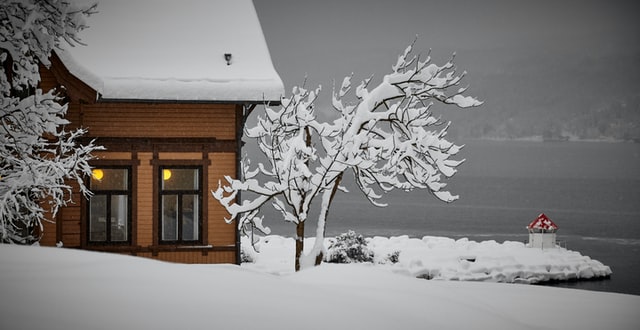
Thankfully, some damage is less severe, and you might be able to wait until spring to make repairs. Here are some more common damages to your home that may occur due to snow and ice.
- Mold growth
- Why it happens: Standing water or soaked wood can cause mold to grow.
- How to prevent it: Make sure you check the foundation, window and door frames, and other wooden components often to make sure they stay dry.
- Sump pump issues
- Why it happens: If your sump pump freezes or gets backed up, it can cause your basement to flood.
- How to prevent it: Have your sump pump regularly inspected to ensure that it’s in good working condition.
- Lawn flooding
- Why it happens: Too much snow and ice can saturate the ground, creating a minor flood on your lawn. It can also become flooded when your sump pump gets backed up.
- How to prevent it: Check your sump pump to ensure it’s working and make sure your lawn is graded properly to keep water flowing down and away from the home.
- Exterior paint and siding damage
- Why it happens: Cold weather and moisture may cause your exterior paint to crack or cause your siding to become damaged.
- How to prevent it: In the spring, check the exterior of your home and repaint cracked areas or replace any damaged siding.
- Burst pipes
- Why it happens: During the winter, burst pipes and plumbing can cause major headaches.
- How to prevent it: One way to prevent this is to put your faucets on a low drip during the overnight hours. Protect outdoor hose bibs by adding a cover to keep them warm.
- Chimney issues
- Why it happens: If you have a fireplace, the chimney can crack or leak when temperatures get cold.
- How to prevent it: Keep an eye on your chimney and make sure that the flashing around the opening is in good condition before winter arrives.
- Insulation
- Why it happens: Soaked insulation may cause a pest infestation that can eventually eat away at your home.
- How to prevent it: Check the attic often to ensure that your insulation is nice and dry.
- Inside plaster walls
- Why it happens: If your home has plaster walls, they could crack when exposed to dry air. The lack of humidity in winter months may shrink the plaster, causing unsightly cracks and damage.
- How to prevent it: Check the humidity levels inside your home to ensure that they’re at a reasonable number year-round.
- Outside front steps
- Why it happens: Ice and snow can weaken the mortar between bricks on your front steps. This can also happen in your driveway, where cracks are common if the ground underneath gets too wet and expands or contracts.
- How to prevent it: Inspect your driveway and steps regularly and make repairs as soon as you notice any gaps or cracks.
- Grout
- Why it happens: Tile floors need grout to keep them in place. The grout may start to peel during the winter if the air is too dry or temperatures are too cold.
- How to prevent it: Seal your grout regularly to protect it, and repair or replace cracked and damaged grout.
- HVAC system
- Why it happens: If your air filter is dirty or the unit works too hard, your HVAC system may fail.
- How to prevent it: Change air filters monthly and check your unit by hiring a professional HVAC inspector during the spring or fall.
- Water leaks in the attic
- Why it happens: A minor breach in your roof can cause water to leak inside the attic.
- How to prevent it: Have your roof inspected and remove snow and ice as often as possible to prevent this.
- Gas leaks
- Why it happens: Like your pipes and plumbing, cold temperatures can cause gas lines to leak when the ground shifts and thaws.
- How to prevent it: Check for leaks often to ensure that your home is safe.
- Falling branches
- Why it happens: Heavy snow can cause weak or old tree branches to snap and fall onto your roof. This can cause severe damage to your home’s exterior and may cause you to lose power.
- How to prevent it: Trim away dead branches in the fall to help prevent this from occurring.
The importance of maintenance
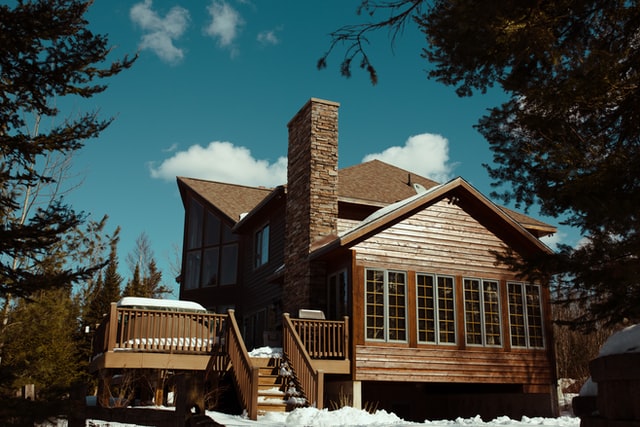
Doing spring and fall maintenance is one of the best ways to prevent snow and ice-related damage to your home. Check your roof, chimney, gutters, windows, and doors, and the foundation often to avoid any inconveniences or serious damages from happening during the wintertime. No one wants to spend an entire winter without heat or have to deal with mold and high humidity in their home during warmer months. Even if it costs you money to make minor adjustments or to get inspections, it’s well worth it in the long run. Some items may be covered under your homeowner’s insurance, so check with your policy to confirm. In most cases, your insurance should cover damage due to fallen trees or limbs, damaged roofs due to ice dams, frozen or burst pipes, and more.

To better understand the impact of snow and ice on homes, insights from snow scientists can be valuable. These experts specialize in studying the behavior of snow, its effects on structures, and offer advice on prevention and maintenance strategies. By consulting with a snow scientist, homeowners can acquire knowledge to safeguard their homes against potential damages caused by snow and ice buildup.
Start doing a few winter home maintenance activities to protect your home from damage throughout the year. It’s best to do these items often, so you’re not stuck worrying about handling everything at the last minute before winter arrives. Not only will a bit of maintenance and prevention save you money and time, but it will also give you peace of mind so you can focus on enjoying the winter season.
